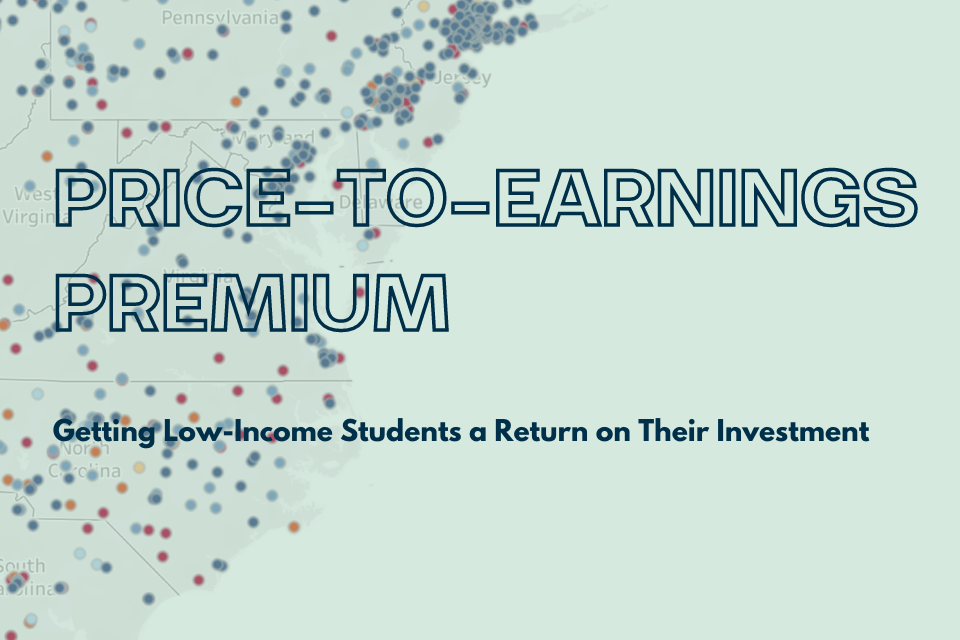Graphic Published April 1, 2021 · 1 minute read
Interactive Map of the Price-to-Earnings Premium for Low-Income Students
Tosin Akintola, Michael Itzkowitz, & Nicole Siegel

The Price-to-Earnings Premium (PEP) is a metric we developed to better determine the economic value that institutions of higher education provide their students. The PEP looks at the net price the average student pays out-of-pocket to obtain an academic credential relative to the additional amount they earn by attending that institution in the first place. If a student earns more than non-college goers, the additional annual income they obtain can be used to recoup their educational costs.
Our follow-up report digs into the outcomes of a critical population—low-income students—and identifies the PEP for this demographic at individual institutions of higher education.

The interactive data visualization featured below identifies the time it takes low-income students to recoup their educational costs at institutions throughout the United States. You can set the criteria you’re interested in, including the type of degree the institution predominately provides, the sector, and the state where the school is located.




